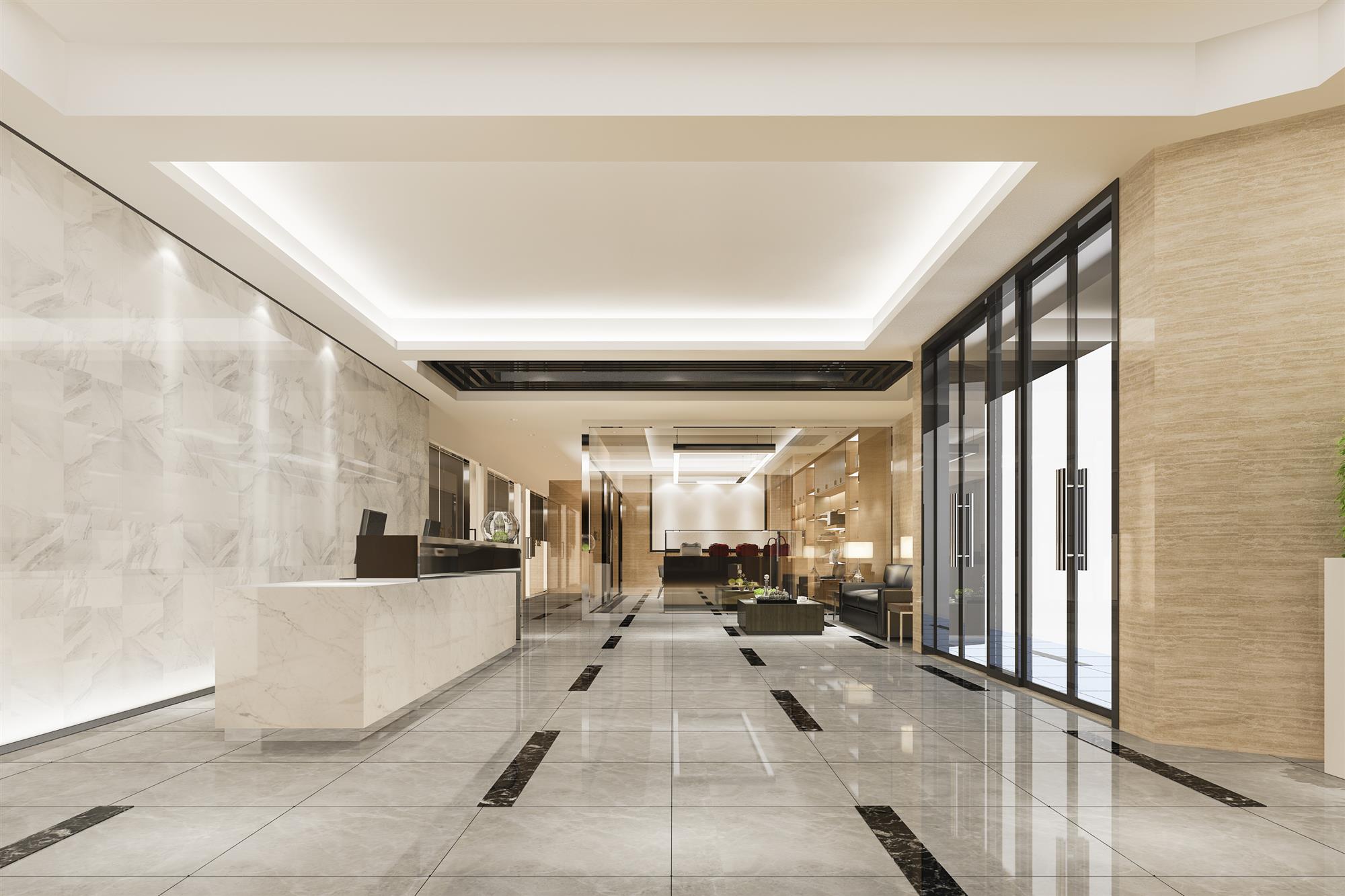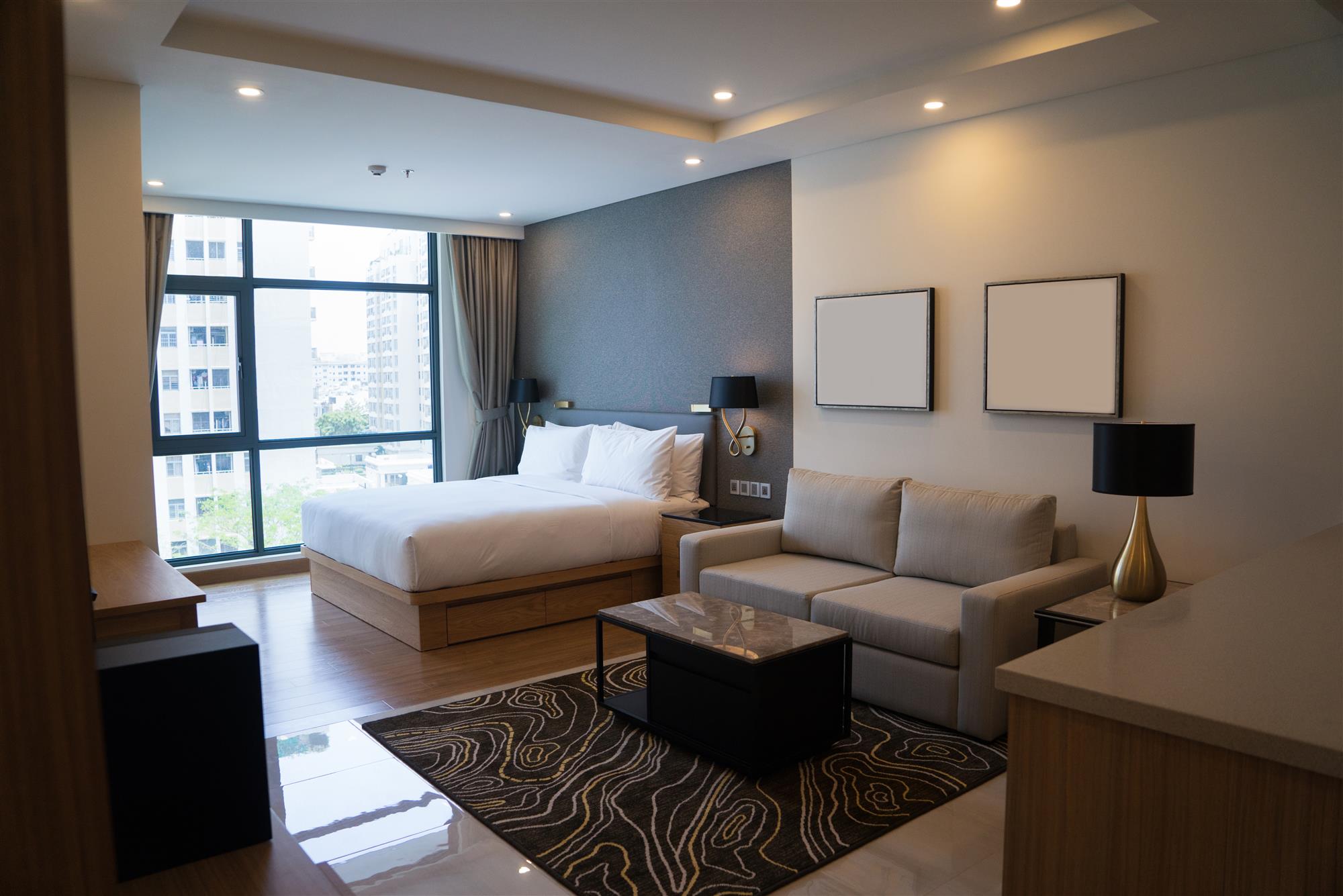 Hotel architecture and design are undergoing substantial changes due to the ongoing pandemic. While our previous article discussed how technology will drive and facilitate some of these changes going forward, this article focuses on the other aspects of design changes that are expected in the post-COVID era. Hotel designers are modifying existing projects and commencing new ones to enhance the guest experience while focusing on social distancing, hygiene, cleanliness, and safety. Hotel entrances, lobbies, guest rooms, meeting spaces, food and beverage options, and even surface textures and finishes are likely to undergo fundamental changes.
Hotel architecture and design are undergoing substantial changes due to the ongoing pandemic. While our previous article discussed how technology will drive and facilitate some of these changes going forward, this article focuses on the other aspects of design changes that are expected in the post-COVID era. Hotel designers are modifying existing projects and commencing new ones to enhance the guest experience while focusing on social distancing, hygiene, cleanliness, and safety. Hotel entrances, lobbies, guest rooms, meeting spaces, food and beverage options, and even surface textures and finishes are likely to undergo fundamental changes.Flexible design with increased efficiency is the way forward for hotels in the post-COVID era.
Low-touch experiences with physical distancing have become imperative to the design of public spaces in hotels. Two-way, touchless entrances are being introduced and lobbies are being redesigned to be multi-functional. For instance, hotel chains such as Hilton have introduced architectural screens with art and biophilic design elements, along with smaller movable dividers, to create a more adaptable and customizable space.

Source: Freepik
The pandemic has caused hotel management teams to rethink their dining options as well. From hotel employees serving buffets instead of guests helping themselves to a hybrid of buffet and table-side service, several alternatives are being applied. Larger but fewer restaurants to accommodate more space while maintaining social distancing norms are also gaining prevalence. New products such as on-the-go cocktail pouches and grab-and-go meals are likely to become a part of the hotel dining experience. Piloting the program for contactless grab-and-go meals, Marriott International has introduced self-serve kiosks at a few hotels, providing guests with the opportunity to select light meals, snacks, and beverages on the go. The breakfast offering has also been incorporated in the vending machine design with the option of contact-free Bluetooth payment.
Conference and meeting rooms will be revamped to incorporate ‘phygital’ options blending physical participation with virtual. These spaces will be equipped with high-quality cameras, sound equipment, and a robust network to support advanced techs such as live streaming, AR, and VR to accommodate the requirements of hybrid conferences and events.
Flexibility will be the key. For instance, meeting rooms and other public spaces at hotels will be designed in such a way that they can be ‘repurposed’ to alternative uses when needed. Moreover, the new hotel design will incorporate modular planning so that in the event of any future disruption it is easier to shut down a part of the hotel and operate a smaller portion efficiently.
Fundamental changes in guest rooms as hoteliers up their cleanliness game for the post-pandemic traveler.
Minimal aesthetics will be preferred as hoteliers try to enhance the perception of cleanliness. Most hotel brands have already done away with extraneous items such as throw pillows, brochures, and room-service menus in guest rooms and replaced them with touchless technology. Hotel guest rooms will become more spacious and flexible as guests seek space for multiple functions – resting, working, dining, and even exercising – within the confines of their rooms.

Source: Freepik
Additional changes to the look and feel of the hotels will focus on using easy to clean/sanitize, anti-germ materials that are durable and can withstand tougher and frequent cleaning. A prime example is using hard surface flooring instead of carpets in guest rooms, as they are easier to clean. Further technology-based advancements include sanitizing public spaces with ultraviolet light technology and using anti-germ, easy-to-clean textiles and fabric for mattresses, bedding, etc.
The pandemic has also accelerated the adoption of sustainable design practices in the hospitality industry. With a growing number of travelers expected to prefer eco-friendly holidays at hotels championing environment-friendly practices in the post-COVID world, hoteliers are now using sustainable, locally produced, and eco-friendly building products for developing hotels. Modular construction, with lower wastage and high-quality finishing in a quicker time, is also gaining prominence. Moreover, other sustainable features from low-flow fixtures, LED lights, automatic faucets, and HVAC occupancy sensors to using solar energy, recycling water, and efficient waste segregation systems are being integrated into the design to reduce wastage and save energy. Hotel designs will also incorporate more outdoor and natural spaces in the future.
The most notable lesson learned from the last year is the importance of preparedness. The pandemic has accelerated several trends which were already being experienced in the hospitality sector: for instance, a greater desire for flexibility, adoption of technology, sustainability, or the fact that the world is shifting to a 24X7 on-the-grid society. Therefore, it is more important than ever for hoteliers to invest in the best practices, adopt the necessary changes, to bounce back stronger post the COVID-19 pandemic.
Additional Contributor to this article: Kavya Jain, Intern at HVS ANAROCK
About Mandeep S Lamba
Mandeep S. Lamba, President – South Asia, oversees the HVS global hospitality practice for South Asia. He has spent over 30 years in the hospitality industry of which the last 19 have been in CEO positions. Having worked with leading International and domestic Hotel Companies such as IHG, Radisson & ITC Hotels, he also set up joint venture companies with Dawnay Day Group UK and Onyx Hospitality, Thailand to own and operate hotels in India giving him a broader exposure to the hospitality business.
An established industry leader, Mandeep has won several awards and recognitions in India and abroad for his accomplishments and contribution to the hospitality industry. He is a Certified Hospitality Administrator from the American Hotels Association (CHA), a member of the Royal Institute of Chartered Surveyors, UK (MRICS) and a member of the Tourism Council of CII (Northern India). His views are often solicited for television and print media as a spokesperson for the hospitality & tourism sector.
Prior to joining HVS in 2018, Mandeep was the Managing Director, Hotels & Hospitality Group for JLL.
Contact Mandeep at +91 981 1306 161 or [email protected]
An established industry leader, Mandeep has won several awards and recognitions in India and abroad for his accomplishments and contribution to the hospitality industry. He is a Certified Hospitality Administrator from the American Hotels Association (CHA), a member of the Royal Institute of Chartered Surveyors, UK (MRICS) and a member of the Tourism Council of CII (Northern India). His views are often solicited for television and print media as a spokesperson for the hospitality & tourism sector.
Prior to joining HVS in 2018, Mandeep was the Managing Director, Hotels & Hospitality Group for JLL.
Contact Mandeep at +91 981 1306 161 or [email protected]
About Dipti Mohan
Dipti Mohan, Associate Vice President - Research with HVS South Asia, is a seasoned knowledge professional with extensive experience in research-based content creation. She has authored several ‘point of view’ documents such as thought leadership reports, expert opinion articles, white papers, and research reports across industries including hospitality, real estate, infrastructure, cement, and construction. Contact Dipti at [email protected]


0 Comments
Success
It will be displayed once approved by an administrator.
Thank you.
Error